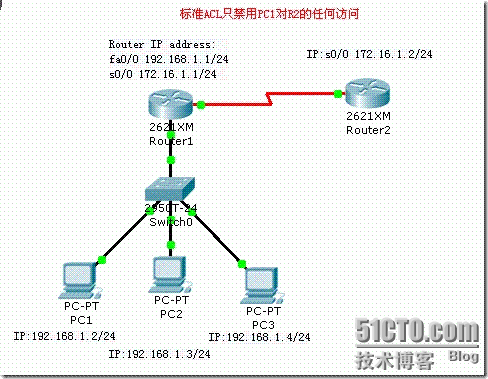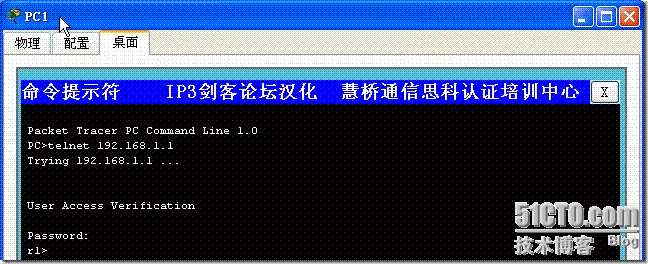- JWT在.NET8 Webapi中的使用
Evan.Pei
.net
JWT身份验证在现代Web应用中广泛使用,主要用于安全地传输用户身份信息.1.身份验证(用户登录后,服务器生成一个JWT并返回给客户端。客户端在后续请求中携带该JWT,服务器通过验证JWT来确认用户身份)2.授权(JWT中可以包含用户的角色或权限信息(如role:“admin”)。服务器根据JWT中的信息决定用户是否有权访问特定资源)3.信息交换(JWT可以包含一些非敏感的用户信息(如用户ID、用
- 机器学习实战——音乐流派分类(主页有源码)
喵了个AI
机器学习实战机器学习分类人工智能
✨个人主页欢迎您的访问✨期待您的三连✨✨个人主页欢迎您的访问✨期待您的三连✨✨个人主页欢迎您的访问✨期待您的三连✨1.简介音乐流派分类是音乐信息检索(MusicInformationRetrieval,MIR)中的一个重要任务,旨在通过分析音频信号的特征,将音乐自动分类到不同的流派(如古典、摇滚、爵士、流行等)。随着数字音乐平台的普及,音乐流派分类技术被广泛应用于音乐推荐、自动标签生成和音乐库管理
- 【推荐项目】044-中医门诊管理系统
蜗牛 | ICU
推荐项目java前端框架毕设springmybatis
044-中医门诊管理系统介绍javaspringbootvuejs中医门诊管理系统为了帮助您更清晰地整理中医门诊管理系统的功能,我将按照您提供的角色和功能进行归类和整理。以下是整理后的功能列表:角色划分核心管理员医生药师用户(普通患者)管理端功能(核心管理员)统计用户统计(按注册时间、活跃度等)药物销售统计处方统计咨询统计用户管理用户列表(查看、编辑、删除)用户角色分配用户权限管理医生管理医生列表
- 【Python 第五篇章】数据类型
蜗牛 | ICU
Python专栏pythonwindows开发语言
一、列表详解list.append(x)在列表末尾添加一个元素。list.extend(iterable)用可迭代对象的元素扩展列表。list.insert(i,x)在指定位置插入元素,第一个参数是插入元素的索引,第二个是值。list.remove(x)从列表中删除第一个值为x的元素。list.pop([i])移除列表中给定位置的条目,并返回该条目。如果未指定索引号,则a.pop()将移除并返回列
- 批量共享,一步到位的软件神器
维度哥
批量共享
今天介绍一个可以一键共享文件夹的软件神器,更厉害的是可以批量设置共享并编辑共享和安全权限。批量共享一键批量共享文件夹这个软件下载之后打开就能直接使用,不需要安装。选择好文件之后设置访问权限以及共享权限,就可以直接共享给别人了。可以根据需求自己增删系统用户。也可以选择指定的用户进行共享。这里可以方便你更好的查看、管理共享用户和对应的权限。在共享设置里,如果不清楚怎么设置,可以全选设置即可。如果还有一
- 学习笔记10——并发编程2线程安全问题与同步机制
码代码的小仙女
高级开发必备技能java知识学习笔记
线程安全问题与同步机制线程安全的本质问题线程安全问题源于多线程环境下对共享资源(数据或状态)的非原子性、非可见性、非有序性访问,导致程序行为不符合预期。主要表现如下:竞态条件(RaceCondition):多个线程对同一资源进行非原子操作,导致结果依赖线程执行顺序。示例:两个线程同时执行count++(非原子操作,实际包含读-改-写三步)。内存可见性问题:线程修改共享变量后,其他线程无法立即看到最
- C 语言中的数组详解
812503533
c语言java开发语言
在C语言中,数组是一种非常基础且常用的数据结构。数组是存储一组相同类型元素的集合,允许我们以统一的方式访问和操作这些元素。C语言中的数组不仅在编程中使用广泛,而且它的灵活性和效率使得它成为了许多算法实现的基础。本篇文章将深入分析C语言中的一维数组,包括定义、存储方式、操作方式、常见问题等等,所有的数据结构都可以从这几个方面来学习。1.数组的定义与存储方式1.1一维数组的定义数组的定义方式包括数组大
- 关于tomcat
gloria123_
tomcatjava
**web应用服务器安装在服务端的服务产品,在web服务器上放置一些允许客户端直接访问的资源,启动服务,客户端通过ip+端口号即可以访问web应用服务器上的资源下载tomcat压缩包并解压后:tomcat:bin目录:存放启动和停止服务等的脚本mac电脑通过命令sudoshstartup.sh来启动,windows系统通过bat可以手动启动conf目录:存放tomcat服务器配置文件web.xml
- 【批量图片区域识别改名】有没有可以自动批量识别jpg图片上的区域文字,并直接提取文字命名的软件么? 没有我们教你基于WPF和腾讯api的方案做一个
如沐春风菜鸡收割机
图片OCR识别扫描PDF提取内容PDF明细提取表格工具实现PDF明细转ExcelPDF数据导出Excel批量PDF内容提取工具批量图片识别区域内容改名批量图片识别多个区域内容导表格
应用场景描述在很多实际工作场景中,我们可能会遇到大量的图片文件,这些图片中包含特定区域的文字信息,比如发票图片上的发票号码、合同图片上的合同编号等。手动识别并为图片命名效率极低且容易出错。使用自动批量识别JPG图片上的区域文字,并直接提取文字为图片命名的软件,可以大大提高工作效率,减少人工操作带来的错误。实现方案:基于WPF和腾讯云OCRAPI步骤1:准备工作注册腾讯云账号:访问腾讯云官网(腾讯云
- C++11之列表初始化
Octopus2077
c++学习笔记
发展历史C++11是C++的第⼆个主要版本,并且是从C++98起的最重要更新。它引⼊了⼤量更改,标准化了既有实践,并改进了对C++程序员可⽤的抽象。在它最终由ISO在2011年8⽉12⽇采纳前,⼈们曾使⽤名称“C++0x”,因为它曾被期待在2010年之前发布。C++03与C++11期间花了8年时间,故⽽这是迄今为⽌最⻓的版本间隔。从那时起,C++有规律地每3年更新⼀次。列表初始化(注意区分列表初始
- Spring MVC 拦截器
跪在镜子前喊帅
javajava
前言SpringMVC提供了一个拦截器的机制,它专门用于拦截controller层的路由请求。它的本质是:AOP面向切面的编程,也就是说符合横切关注点的功能都可以考虑使用拦截器实现。比如一些应用场景:权限检查例如:用户登录检查,访问项目的内部接口时,可以通过拦截器检测用户是否登录,如果登录,直接放回用户登录页面。日志记录更新推荐用原生的AOP机制会更好一点,粒度会更细,控制起来也更方便,如果你是针
- 四种主要的 API 架构风格:RPC、SOAP、REST、GRAPHQL
小马不敲代码
系统设计架构rpcgraphql
讨论四种主要的API架构风格,比较它们的优缺点,并重点介绍每种情况下最适合的API架构风格。RPCSOAPRESTGRAPHQL两个单独的应用程序需要中介程序才能相互通信,因此,开发人员经常需要搭建桥梁——也就是应用程序编程接口(API),来允许一个系统访问另一个系统的信息或功能。为了快速、大规模地集成不同的应用程序,API使用协议或规范来定义那些通过网络传输的消息的语义和信息。这些规范构成了AP
- 使用LangChain访问个人数据第一章-简介
明志刘明
大模型学习手册langchain
需要学习提示词工程的同学请看面向开发者的提示词工程需要学习ChatGPT的同学请查看搭建基于ChatGPT的问答系统需要学习LangChian开发的同学请查看基于LangChain开发应用程序正文在大数据时代,数据价值逐渐凸显,打造定制化、个性化服务,个人数据尤为重要。要开发一个具备较强服务能力、能够充分展现个性化智能的应用程序,大模型与个人数据的对齐是一个重要步骤。作为针对大模型开发应运而生的框
- 使用LangChain访问个人数据第八章-总结
明志刘明
大模型学习手册langchain人工智能
需要学习提示词工程的同学请看面向开发者的提示词工程需要学习ChatGPT的同学请查看搭建基于ChatGPT的问答系统需要学习LangChian开发的同学请查看基于LangChain开发应用程序本部分前几个章节请查看使用LangChain访问个人数据第一章-简介使用LangChain访问个人数据第二章-文档加载使用LangChain访问个人数据第三章-文档分割使用LangChain访问个人数据第四章
- promise:看这一篇就够了!
tuoluoo
深入前端前端javascript
前言如果一个函数的执行结果需要另一个函数的执行结果,而这一个函数的执行结果还需要另一个函数的执行结果这种情况一直嵌套下去该如何处理?举个实际的例子:我们需要从一个api获取用户信息,然后基于用户id从另一个api获取用户的订单列表,最后根据订单中的商品id获取商品详情。ps:每个步骤都是异步的,并且后一步骤依赖于前一步骤的结果。由于js是单线程语言,在es6之前解决上述问题就需要用到回调函数cal
- QComboBox
天涯路s
qtqt
QComboBox是下拉列表框组件,它可以提供下拉列表供用户选择输入,也可以提供编辑框用于输入文字,所以QComboBox也被称为组合框。下拉列表框的下拉列表的每个项(item,或称为列表项)可以存储一个或多个QVariant类型的用户数据,用户数据并不显示在界面上。一.QComboBox类1.QComboBox类的属性和接口函数QComboBox类的主要属性如表所示:QComboBox类的主要属
- Spring 多实例注入
m0_74825172
面试学习路线阿里巴巴springjava后端
文章目录1.Spring多实例注入的应用场景2.Spring多实例注入的使用2.1通过ApplicationContext获取多实例2.2配置@Scope的proxyMode属性获取多实例1.Spring多实例注入的应用场景Spring容器中保存的bean默认是单例的,通常来说这样做可以降低bean对象创建的频率,在某些访问量大的场景下可以节省对象创建消耗的时间,提高响应性能。但在一些其他场景,比
- Vue3 基础教程:从入门到实践 (保姆级教学)
前段技术人
学习前端vue.jsvue
一、Vue3简介Vue.js是一款用于构建用户界面的JavaScript框架,而Vue3作为其最新的主要版本,带来了诸多令人瞩目的改进与新特性,使其在前端开发领域备受青睐。(一)Vue3的优势性能提升:Vue3重写了虚拟DOM算法,显著提高了挂载、更新和渲染的速度。在处理大型列表或频繁数据更新的场景时,Vue3的表现更为出色,能够为用户带来更流畅的交互体验。例如,一个包含大量商品信息的电商产品列表
- 视频生成缩略图
后端
视频生成缩略图最近有个需求,视频上传之后在列表和详情页需要展示缩略图使用ffmpeg首先引入jar包org.bytedecojavacpp1.4.3org.bytedecojavacv1.4.3org.bytedeco.javacpp-presetsffmpeg-platform4.0.2-1.4.3代码如下publicStringgetThumbnails(StringvideoFilePath
- 什么是SaaS化部署
LCY133
阿里云
SaaS化部署是将传统软件转变为“软件即服务”(SoftwareasaService,SaaS)模式的过程。其核心是通过云端托管、多租户架构和按需订阅的方式,让用户通过互联网直接使用软件功能,无需自行安装和维护本地服务器。以下是详细解析:核心特点云端托管•软件部署在云端服务器(如AWS、阿里云),用户通过浏览器或API访问。•优势:无需本地硬件投入,降低运维成本。多租户架构(Multi-tenan
- 内容中台的核心架构是什么?
清风徐徐de来
其他
模块化架构设计解析内容中台的模块化架构通过分层解耦实现灵活扩展,其核心由基础资源层、能力服务层与业务应用层构成。基础层以统一数据治理体系为支撑,通过标准化接口实现结构化与非结构化数据的统一存储,例如Baklib采用分布式存储架构保障数据安全性与访问效率。服务层整合智能分发引擎与API协同策略,支持动态编排内容处理流程,如自动标签生成与多版本管理。应用层通过可配置化组件对接多终端场景,确保知识库构建
- 如何解决网站风险提示
安全
当平时访问某个网站时,如果发现浏览器地址栏显示“不安全”警告,这通常意味着该网站可能存在安全风险或SSL证书配置不当。以下是一些简单易懂、快速有效的解决方案。一、检查并更新SSL证书确认HTTPS协议:打开您的浏览器,访问目标网站。检查网址是否以“https”开头。如果不是,说明该网站未使用SSL加密,需要启用HTTPS协议。验证SSL证书:如果网址以“https”开头,但浏览器仍显示“不安全”,
- QT之QComboBox详细介绍
小小怪同学の
qt开发语言
此篇文章来源于自己在使用QComboBox类的时候相对其重写而总结的其成员函数知识点,本人能力有限,欢迎大家评论区评论,共同学习一、QComboBox介绍QComboBox是QtGUI库中的一个核心组件,它是一个复合型图形用户界面控件,常用于提供一种紧凑的方式来展示可选项列表。QComboBox通常表现为一个下拉列表框,包含一个文本标签区域和一个下拉箭头按钮,点击箭头时会显示出可供选择的项目列表。
- JavaScript-闭包
tuoluoo
JavaScript学习javascript
闭包概念在JS中,变量的作用域属于函数作用域,在函数执行后作用域就会被清理、内存也随之回收,但是由于闭包是建立在一个函数内部的子函数,由于其可访问上级作用域的原因,即使上级函数执行完,作用域也不会随之销毁,这时的子函数——也就是闭包形成:函数中嵌套函数作用:函数内部调用外部变量、构造函数的私有属性、延长变量生命周期优点:希望一个变量长期存在内存中、模块化代码避免全局变量的污染、私有属性缺点:无法回
- 【Python代码练习(简单应用)】
9...
python汇编前端开发语言dreamweaver
一、Python列表添加与删除元素:append()。在列表末尾添加新的格式元素添加格式:list.append(元素)删除格式:list.remove(元素)例如:#给出代码listA=['水煮千丝','平板豆腐','白烧饭','香菇青菜','西红柿鸡蛋汤']listA._________("红烧肉")listA._________("水煮千丝")print(listA)将“红烧肉”放入列表中,
- 《C#多播委托:深入解析核心机制与实战应用指南》
Ro小陌
C#WindowsJavac#windowsjava
在C#中,多播委托(MulticastDelegate)是一种可以引用多个方法的委托类型,它允许将多个方法绑定到同一个委托实例上,并通过一次调用触发所有方法的执行。这是事件处理机制的核心实现基础。以下从底层机制到实际应用详细解析:一、委托基础委托的本质委托是类型安全的函数指针,继承自System.MulticastDelegate类。每个委托实例内部维护一个调用列表(InvocationList)
- 整理一下arcGis desktop版本软件, 从入门到精通需要学习的知识点
AnalogElectronic
arcgis学习
整理一下arcGisdesktop版本软件,从入门到精通需要学习的知识点以下是一份关于ArcGISDesktop从入门到精通的学习知识点整理:一、软件初认识与基础操作软件初认识:了解ArcGISDesktop的界面布局,包括内容列表、ArcToolbox工具箱、结果窗口、地图窗口、目录窗口、搜索窗口、python编程窗口以及其他常用工具条等。数据添加与管理:掌握通过不同方式添加数据,如图层列表右键
- 深入了解淘宝商品评论API接口
数据捕手19970108018
爬虫技能晋升路线java数据库前端
淘宝商品评论API接口是淘宝开放平台(TOP)提供的重要数据接口之一,主要用于获取商品的用户评论信息。以下是深入了解该接口的关键信息:一、接口类型与功能淘宝评论相关API主要包括以下几类:基础评论数据接口taobao.item.taobaocomments.get(需确认是否仍有效):获取商品的所有评论列表(包括评分、内容、时间等)。taobao.tbk.item.get:获取商品基础信息(含评论
- 拉取gitlab项目时出现500的错误的权限问题
one 大白(●—●)
gitlab
title:拉取gitlab项目时出现500的错误的权限问题date:2025-03-1018:09:08tags:gitlabgit拉取gitlab项目时出现500的错误的权限问题Gitlab克隆代码**我遇到的问题错误**:**问题解决步骤**:1、确定你可以浏览器访问到项目页面2、确定你的邮箱或账号已添加,有权限可以拉取项目**解决步骤**本地拉取代码时生成ssh密钥:密钥查看地址:此步骤完
- 20个简单的python代码练习
qq_恰同学少年
python开发语言
下面整理了20个简单的python代码练习,供大家学习交流使用,轻易上手,复制下来就能用!!!废话不多说,直奔主题1.输入一个不超过5位的正整数,输出其逆数。例如输入12345,输出应为54321。a=input('请输入一个不超过5位的正整数:')print('其逆数为:',a[::-1])注:该代码使用了列表的切片和反转操作,首先将这个数的每个位上的数字存储到一个列表中,然后通过列表的反转来得
- Java序列化进阶篇
g21121
java序列化
1.transient
类一旦实现了Serializable 接口即被声明为可序列化,然而某些情况下并不是所有的属性都需要序列化,想要人为的去阻止这些属性被序列化,就需要用到transient 关键字。
- escape()、encodeURI()、encodeURIComponent()区别详解
aigo
JavaScriptWeb
原文:http://blog.sina.com.cn/s/blog_4586764e0101khi0.html
JavaScript中有三个可以对字符串编码的函数,分别是: escape,encodeURI,encodeURIComponent,相应3个解码函数:,decodeURI,decodeURIComponent 。
下面简单介绍一下它们的区别
1 escape()函
- ArcgisEngine实现对地图的放大、缩小和平移
Cb123456
添加矢量数据对地图的放大、缩小和平移Engine
ArcgisEngine实现对地图的放大、缩小和平移:
个人觉得是平移,不过网上的都是漫游,通俗的说就是把一个地图对象从一边拉到另一边而已。就看人说话吧.
具体实现:
一、引入命名空间
using ESRI.ArcGIS.Geometry;
using ESRI.ArcGIS.Controls;
二、代码实现.
- Java集合框架概述
天子之骄
Java集合框架概述
集合框架
集合框架可以理解为一个容器,该容器主要指映射(map)、集合(set)、数组(array)和列表(list)等抽象数据结构。
从本质上来说,Java集合框架的主要组成是用来操作对象的接口。不同接口描述不同的数据类型。
简单介绍:
Collection接口是最基本的接口,它定义了List和Set,List又定义了LinkLi
- 旗正4.0页面跳转传值问题
何必如此
javajsp
跳转和成功提示
a) 成功字段非空forward
成功字段非空forward,不会弹出成功字段,为jsp转发,页面能超链接传值,传输变量时需要拼接。接拼接方式list.jsp?test="+strweightUnit+"或list.jsp?test="+weightUnit+&qu
- 全网唯一:移动互联网服务器端开发课程
cocos2d-x小菜
web开发移动开发移动端开发移动互联程序员
移动互联网时代来了! App市场爆发式增长为Web开发程序员带来新一轮机遇,近两年新增创业者,几乎全部选择了移动互联网项目!传统互联网企业中超过98%的门户网站已经或者正在从单一的网站入口转向PC、手机、Pad、智能电视等多端全平台兼容体系。据统计,AppStore中超过85%的App项目都选择了PHP作为后端程
- Log4J通用配置|注意问题 笔记
7454103
DAOapachetomcatlog4jWeb
关于日志的等级 那些去 百度就知道了!
这几天 要搭个新框架 配置了 日志 记下来 !做个备忘!
#这里定义能显示到的最低级别,若定义到INFO级别,则看不到DEBUG级别的信息了~!
log4j.rootLogger=INFO,allLog
# DAO层 log记录到dao.log 控制台 和 总日志文件
log4j.logger.DAO=INFO,dao,C
- SQLServer TCP/IP 连接失败问题 ---SQL Server Configuration Manager
darkranger
sqlcwindowsSQL ServerXP
当你安装完之后,连接数据库的时候可能会发现你的TCP/IP 没有启动..
发现需要启动客户端协议 : TCP/IP
需要打开 SQL Server Configuration Manager...
却发现无法打开 SQL Server Configuration Manager..??
解决方法: C:\WINDOWS\system32目录搜索framedyn.
- [置顶] 做有中国特色的程序员
aijuans
程序员
从出版业说起 网络作品排到靠前的,都不会太难看,一般人不爱看某部作品也是因为不喜欢这个类型,而此人也不会全不喜欢这些网络作品。究其原因,是因为网络作品都是让人先白看的,看的好了才出了头。而纸质作品就不一定了,排行榜靠前的,有好作品,也有垃圾。 许多大牛都是写了博客,后来出了书。这些书也都不次,可能有人让为不好,是因为技术书不像小说,小说在读故事,技术书是在学知识或温习知识,有些技术书读得可
- document.domain 跨域问题
avords
document
document.domain用来得到当前网页的域名。比如在地址栏里输入:javascript:alert(document.domain); //www.315ta.com我们也可以给document.domain属性赋值,不过是有限制的,你只能赋成当前的域名或者基础域名。比如:javascript:alert(document.domain = "315ta.com");
- 关于管理软件的一些思考
houxinyou
管理
工作好多看年了,一直在做管理软件,不知道是我最开始做的时候产生了一些惯性的思维,还是现在接触的管理软件水平有所下降.换过好多年公司,越来越感觉现在的管理软件做的越来越乱.
在我看来,管理软件不论是以前的结构化编程,还是现在的面向对象编程,不管是CS模式,还是BS模式.模块的划分是很重要的.当然,模块的划分有很多种方式.我只是以我自己的划分方式来说一下.
做为管理软件,就像现在讲究MVC这
- NoSQL数据库之Redis数据库管理(String类型和hash类型)
bijian1013
redis数据库NoSQL
一.Redis的数据类型
1.String类型及操作
String是最简单的类型,一个key对应一个value,string类型是二进制安全的。Redis的string可以包含任何数据,比如jpg图片或者序列化的对象。
Set方法:设置key对应的值为string类型的value
- Tomcat 一些技巧
征客丶
javatomcatdos
以下操作都是在windows 环境下
一、Tomcat 启动时配置 JAVA_HOME
在 tomcat 安装目录,bin 文件夹下的 catalina.bat 或 setclasspath.bat 中添加
set JAVA_HOME=JAVA 安装目录
set JRE_HOME=JAVA 安装目录/jre
即可;
二、查看Tomcat 版本
在 tomcat 安装目
- 【Spark七十二】Spark的日志配置
bit1129
spark
在测试Spark Streaming时,大量的日志显示到控制台,影响了Spark Streaming程序代码的输出结果的查看(代码中通过println将输出打印到控制台上),可以通过修改Spark的日志配置的方式,不让Spark Streaming把它的日志显示在console
在Spark的conf目录下,把log4j.properties.template修改为log4j.p
- Haskell版冒泡排序
bookjovi
冒泡排序haskell
面试的时候问的比较多的算法题要么是binary search,要么是冒泡排序,真的不想用写C写冒泡排序了,贴上个Haskell版的,思维简单,代码简单,下次谁要是再要我用C写冒泡排序,直接上个haskell版的,让他自己去理解吧。
sort [] = []
sort [x] = [x]
sort (x:x1:xs)
| x>x1 = x1:so
- java 路径 配置文件读取
bro_feng
java
这几天做一个项目,关于路径做如下笔记,有需要供参考。
取工程内的文件,一般都要用相对路径,这个自然不用多说。
在src统计目录建配置文件目录res,在res中放入配置文件。
读取文件使用方式:
1. MyTest.class.getResourceAsStream("/res/xx.properties")
2. properties.load(MyTest.
- 读《研磨设计模式》-代码笔记-简单工厂模式
bylijinnan
java设计模式
声明: 本文只为方便我个人查阅和理解,详细的分析以及源代码请移步 原作者的博客http://chjavach.iteye.com/
package design.pattern;
/*
* 个人理解:简单工厂模式就是IOC;
* 客户端要用到某一对象,本来是由客户创建的,现在改成由工厂创建,客户直接取就好了
*/
interface IProduct {
- SVN与JIRA的关联
chenyu19891124
SVN
SVN与JIRA的关联一直都没能装成功,今天凝聚心思花了一天时间整合好了。下面是自己整理的步骤:
一、搭建好SVN环境,尤其是要把SVN的服务注册成系统服务
二、装好JIRA,自己用是jira-4.3.4破解版
三、下载SVN与JIRA的插件并解压,然后拷贝插件包下lib包里的三个jar,放到Atlassian\JIRA 4.3.4\atlassian-jira\WEB-INF\lib下,再
- JWFDv0.96 最新设计思路
comsci
数据结构算法工作企业应用公告
随着工作流技术的发展,工作流产品的应用范围也不断的在扩展,开始进入了像金融行业(我已经看到国有四大商业银行的工作流产品招标公告了),实时生产控制和其它比较重要的工程领域,而
- vi 保存复制内容格式粘贴
daizj
vi粘贴复制保存原格式不变形
vi是linux中非常好用的文本编辑工具,功能强大无比,但对于复制带有缩进格式的内容时,粘贴的时候内容错位很严重,不会按照复制时的格式排版,vi能不能在粘贴时,按复制进的格式进行粘贴呢? 答案是肯定的,vi有一个很强大的命令可以实现此功能 。
在命令模式输入:set paste,则进入paste模式,这样再进行粘贴时
- shell脚本运行时报错误:/bin/bash^M: bad interpreter 的解决办法
dongwei_6688
shell脚本
出现原因:windows上写的脚本,直接拷贝到linux系统上运行由于格式不兼容导致
解决办法:
1. 比如文件名为myshell.sh,vim myshell.sh
2. 执行vim中的命令 : set ff?查看文件格式,如果显示fileformat=dos,证明文件格式有问题
3. 执行vim中的命令 :set fileformat=unix 将文件格式改过来就可以了,然后:w
- 高一上学期难记忆单词
dcj3sjt126com
wordenglish
honest 诚实的;正直的
argue 争论
classical 古典的
hammer 锤子
share 分享;共有
sorrow 悲哀;悲痛
adventure 冒险
error 错误;差错
closet 壁橱;储藏室
pronounce 发音;宣告
repeat 重做;重复
majority 大多数;大半
native 本国的,本地的,本国
- hibernate查询返回DTO对象,DTO封装了多个pojo对象的属性
frankco
POJOhibernate查询DTO
DTO-数据传输对象;pojo-最纯粹的java对象与数据库中的表一一对应。
简单讲:DTO起到业务数据的传递作用,pojo则与持久层数据库打交道。
有时候我们需要查询返回DTO对象,因为DTO
- Partition List
hcx2013
partition
Given a linked list and a value x, partition it such that all nodes less than x come before nodes greater than or equal to x.
You should preserve the original relative order of th
- Spring MVC测试框架详解——客户端测试
jinnianshilongnian
上一篇《Spring MVC测试框架详解——服务端测试》已经介绍了服务端测试,接下来再看看如果测试Rest客户端,对于客户端测试以前经常使用的方法是启动一个内嵌的jetty/tomcat容器,然后发送真实的请求到相应的控制器;这种方式的缺点就是速度慢;自Spring 3.2开始提供了对RestTemplate的模拟服务器测试方式,也就是说使用RestTemplate测试时无须启动服务器,而是模拟一
- 关于推荐个人观点
liyonghui160com
推荐系统关于推荐个人观点
回想起来,我也做推荐了3年多了,最近公司做了调整招聘了很多算法工程师,以为需要多么高大上的算法才能搭建起来的,从实践中走过来,我只想说【不是这样的】
第一次接触推荐系统是在四年前入职的时候,那时候,机器学习和大数据都是没有的概念,什么大数据处理开源软件根本不存在,我们用多台计算机web程序记录用户行为,用.net的w
- 不间断旋转的动画
pangyulei
动画
CABasicAnimation* rotationAnimation;
rotationAnimation = [CABasicAnimation animationWithKeyPath:@"transform.rotation.z"];
rotationAnimation.toValue = [NSNumber numberWithFloat: M
- 自定义annotation
sha1064616837
javaenumannotationreflect
对象有的属性在页面上可编辑,有的属性在页面只可读,以前都是我们在页面上写死的,时间一久有时候会混乱,此处通过自定义annotation在类属性中定义。越来越发现Java的Annotation真心很强大,可以帮我们省去很多代码,让代码看上去简洁。
下面这个例子 主要用到了
1.自定义annotation:@interface,以及几个配合着自定义注解使用的几个注解
2.简单的反射
3.枚举
- Spring 源码
up2pu
spring
1.Spring源代码
https://github.com/SpringSource/spring-framework/branches/3.2.x
注:兼容svn检出
2.运行脚本
import-into-eclipse.bat
注:需要设置JAVA_HOME为jdk 1.7
build.gradle
compileJava {
sourceCompatibilit
- 利用word分词来计算文本相似度
yangshangchuan
wordword分词文本相似度余弦相似度简单共有词
word分词提供了多种文本相似度计算方式:
方式一:余弦相似度,通过计算两个向量的夹角余弦值来评估他们的相似度
实现类:org.apdplat.word.analysis.CosineTextSimilarity
用法如下:
String text1 = "我爱购物";
String text2 = "我爱读书";
String text3 =










